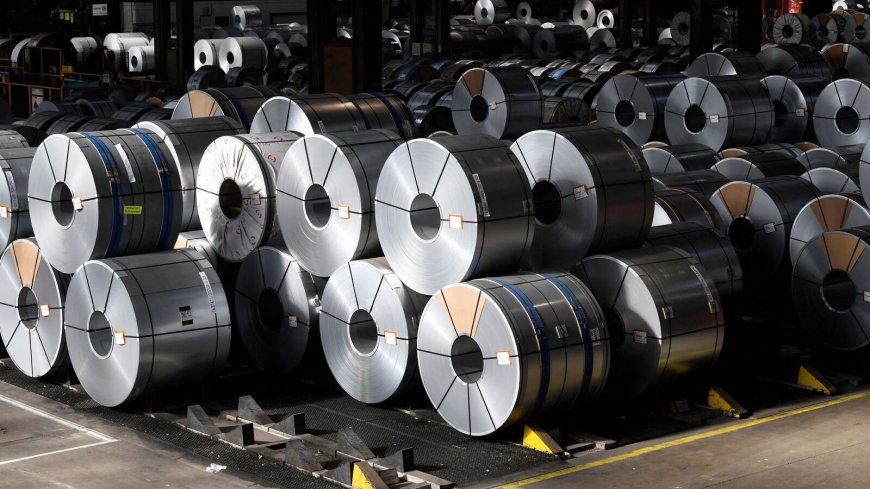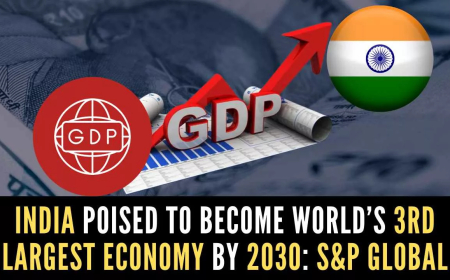Govt Eyes PSUs to Boost Green Steel Demand in India | Sustainable Infrastructure Push
To promote sustainability, the Indian government may leverage public sector undertakings (PSUs) to increase green steel consumption, supporting decarbonization and net-zero goals.

Govt May Harness Public Sector Undertakings to Drive Green Steel Consumption
In a significant move towards aligning industrial growth with climate commitments, the Indian government is considering a policy initiative that could position public sector undertakings (PSUs) as key drivers of green steel consumption. This strategy, if formalized, is expected to accelerate the nation’s journey toward a low-carbon future while simultaneously strengthening the domestic green steel industry.
Why Green Steel Matters Now More Than Ever
Steel is at the heart of modern infrastructure. From bridges and buildings to automobiles and appliances, it is indispensable. However, conventional steelmaking is one of the most carbon-intensive industrial processes, accounting for nearly 8% of global carbon emissions. As India ramps up its infrastructure development and economic growth, it must reconcile this expansion with its climate goals—particularly the target of net-zero emissions by 2070.
Green steel, produced using cleaner technologies such as hydrogen-based direct reduced iron (DRI) or electric arc furnaces powered by renewable energy, is a viable alternative. But like most green technologies, it comes with a cost premium. That’s where the government’s proposal to involve PSUs comes in.
PSUs: The Potential Game Changers
Public sector undertakings are massive players in India’s industrial and infrastructure ecosystem. Entities like Indian Railways, SAIL, BHEL, NTPC, and ONGC execute large-scale projects and procure substantial volumes of raw materials, including steel. By mandating or encouraging these entities to source a portion of their steel requirements from green producers, the government can catalyze demand.
Such a policy shift would serve multiple purposes:
-
Create a reliable demand base for green steel manufacturers.
-
Reduce production risk for companies investing in clean technologies.
-
Send a strong market signal that could attract private investments into green steel production.
-
Align PSU procurement with the broader Sustainable Development Goals (SDGs) and ESG norms.
Policy Framework in the Making
According to industry insiders, the Ministry of Steel is in talks with multiple stakeholders to formulate a comprehensive green steel policy. One of the key features under consideration is setting procurement targets for green steel across various government departments and PSUs.
The proposed policy may also include:
-
Incentives or subsidies to offset the price differential between green and conventional steel.
-
Certification and labeling norms to identify and promote genuine green steel products.
-
Support for R&D and pilot projects through public-private partnerships.
-
Monitoring and compliance mechanisms to ensure effective implementation.
Bridging the Cost Gap
Green steel currently costs 25-30% more than its conventional counterpart, largely due to expensive inputs like green hydrogen and the need for high capital investment in new technologies. To make the economics work, the government may explore mechanisms such as:
-
Viability gap funding for steel producers.
-
Tax incentives for PSUs using green steel.
-
Green credits or tradable certificates similar to renewable energy credits.
Experts believe that by absorbing the initial cost premium through public procurement, the government can drive down prices over time via economies of scale and technological innovation.
Industry Reaction: Mixed But Hopeful
While the industry is cautiously optimistic, it’s also calling for clarity and long-term commitment. “This move could be a game-changer,” says a senior executive at a leading steel company. “But we need predictability. Green steel investments are capital-intensive and span years. PSUs can offer the demand visibility we need.”
Environmentalists, too, have welcomed the move. “It’s encouraging to see climate leadership through procurement reform,” says a policy analyst with a clean energy think tank. “Public procurement often sets the tone for the broader market.”
Aligning with Global Trends
Globally, the green steel momentum is picking up. Europe, particularly Germany and Sweden, is investing billions in hydrogen-based steel production. Even major corporations like BMW and Volvo have pledged to source low-carbon steel. India risks falling behind if it doesn’t act swiftly.
The proposed policy also aligns well with initiatives like:
-
India’s Hydrogen Mission, which aims to become a global hub for green hydrogen production.
-
The Production Linked Incentive (PLI) scheme, where green technologies are being prioritized.
-
The UN Climate Goals, to which India is a committed signatory.
Role of Technology and Startups
While PSUs may be the demand anchors, technology will be the enabler. Startups and engineering firms are already innovating in areas like carbon capture, efficient furnaces, and hydrogen production. A robust green steel ecosystem will require:
-
Collaboration between large producers and tech innovators.
-
Access to concessional finance.
-
Skilled workforce and academic partnerships for R&D.
Institutions like IITs and CSIR labs are already working on pilot projects, and the government’s backing can help scale these efforts.
Road Ahead: Challenges & Opportunities
This policy direction is not without hurdles:
-
Ensuring PSU compliance without inflating project costs.
-
Addressing the lack of standardized definitions and certification for green steel.
-
Balancing between import substitution and indigenous capacity building.
But the opportunities are far greater:
-
India can emerge as a global green steel supplier.
-
Green steel could open up new export markets.
-
It positions India as a responsible industrial economy, ready for the climate-conscious global marketplace.
India’s move to involve PSUs in the green steel revolution could mark a pivotal point in the country’s sustainable development journey. It’s a strategic blend of industrial policy and climate action—one that not only supports India’s net-zero ambitions but also sets the stage for global leadership in green manufacturing.
The government’s next steps will be closely watched by investors, industry players, and environmentalists alike. But one thing is certain: green steel is no longer just a buzzword. It’s becoming a cornerstone of India’s economic and environmental strategy.
What's Your Reaction?
 Like
0
Like
0
 Dislike
0
Dislike
0
 Love
0
Love
0
 Funny
0
Funny
0
 Angry
0
Angry
0
 Sad
0
Sad
0
 Wow
0
Wow
0












































































